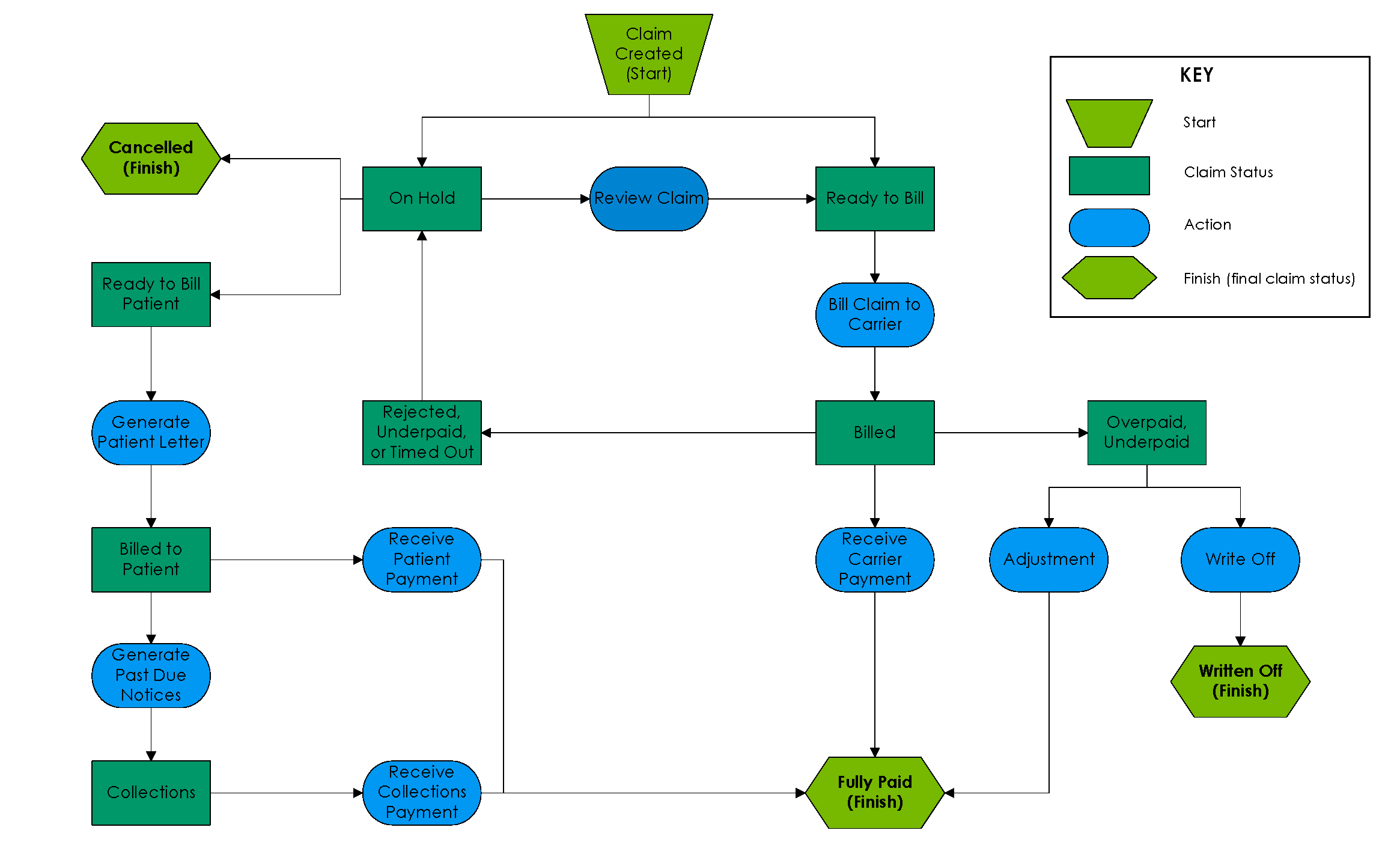Claim Life Cycle
Claims Management runs a scheduled integration that pulls invoiced orders from Front Office and converts each invoice into a claim that appears in Claims Management.
When a claim first appears in Claims Management, review the claim and edit it if necessary. Then, set the claim’s status to Ready to Bill. If your system is enabled to automatically bill VSP or other carriers, all claims for those carriers with the status Ready to Bill are billed to their corresponding carriers.
If your system is not set up to automatically bill claims for specific carriers, review claims for those carriers and change their statuses to Ready to Bill. Unless you are billing claims through Gateway EDI, Standard EDI, or to VSP, print out the CMS 1500 forms for the claims, and mail the CMS 1500 forms to the appropriate carriers. If you are sending claims for some carriers through Gateway EDI or Standard EDI, bill those claims through EDI Transmission in Claims Management.
After a carrier pays the balance of the claim, record the payment in the Process Payments module. After the complete outstanding receivable for a claim is paid and recorded in Claims Management, the claim status changes to Fully Paid.
If a carrier rejects a claim, you can edit the claim and complete one of the following steps:
- Resend the claim to the carrier
- Bill the claim to the patient
- Write off the claim
Record all payments from patients in the Process Payments module.
The following flowchart explains the claim life cycle in terms of a claim’s status. The flowchart is a simplified outline. Changes to orders and transactions in Front Office can modify the claim billing process. For example, you can put a claim on hold or adjust/write off items at many points throughout the claim life cycle.
